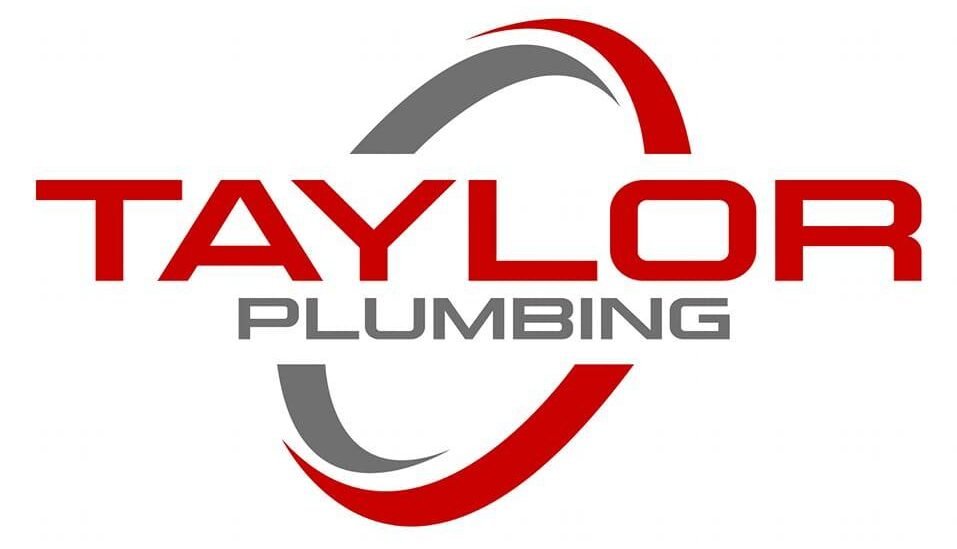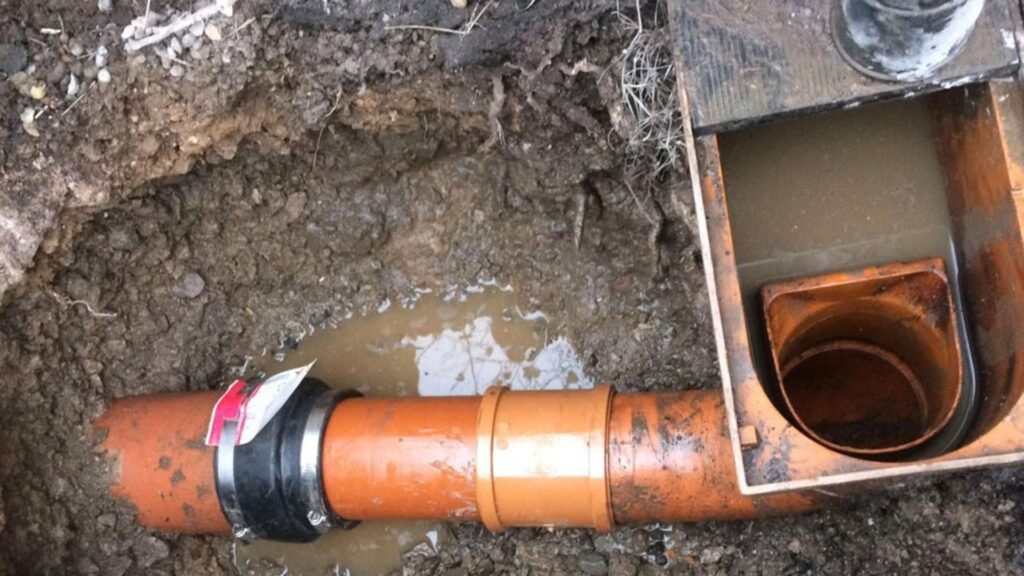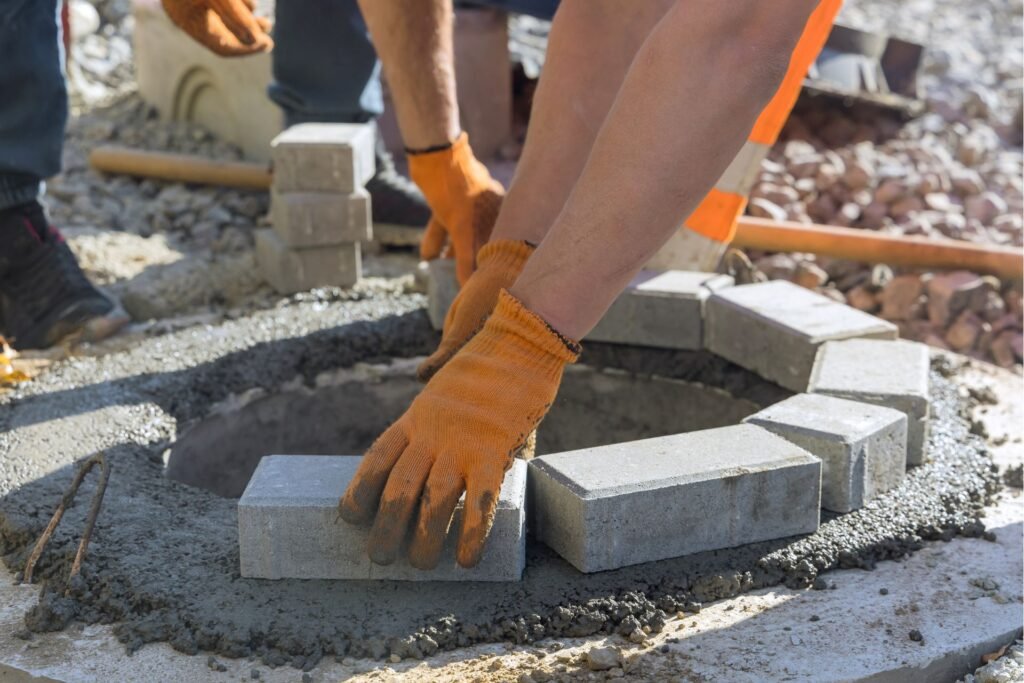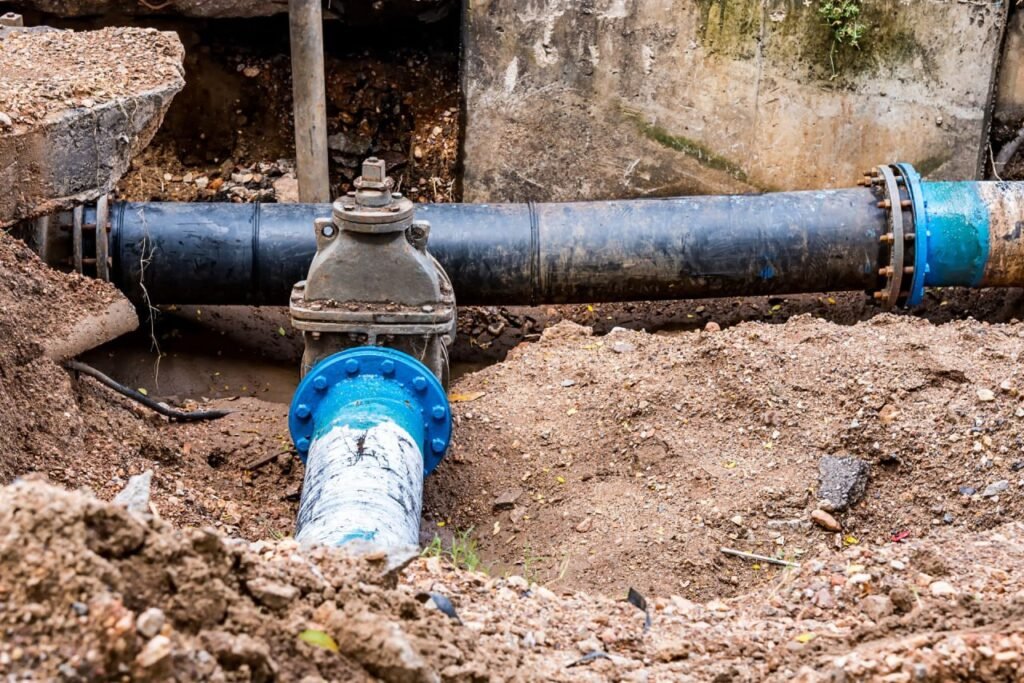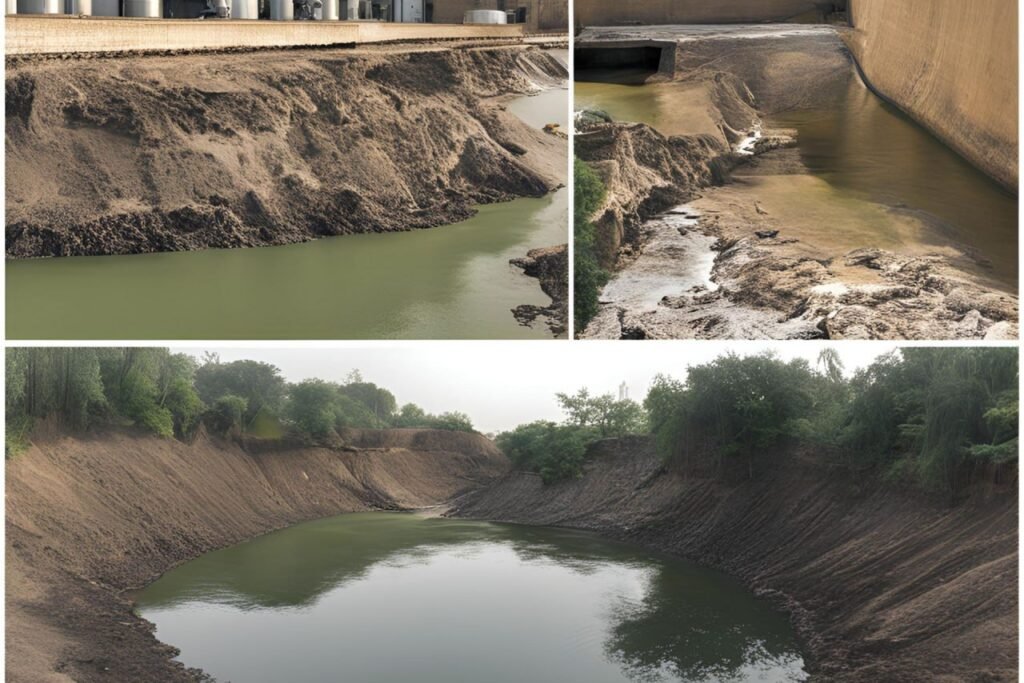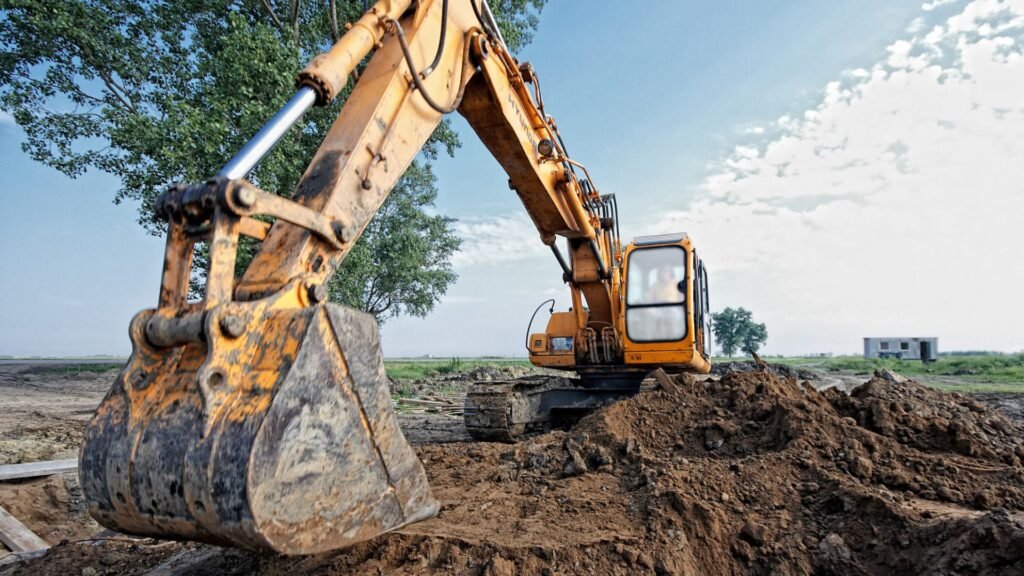Welcome to our comprehensive guide on gully traps in New Zealand! Whether you’re a homeowner looking to improve your drainage system or simply curious about how these essential components work, you’ve come to the right place. In this article, we’ll delve into what gully traps are, why they’re crucial for maintaining a safe and odor-free environment, and how you can ensure your home’s drainage system remains in top condition. From understanding the different types of gully traps available in NZ to learning about common issues and maintenance tips, we’ve got all the information you need to keep your home running smoothly. So, let’s dive in and explore the world of gully traps together.
A gully trap is a crucial component of New Zealand’s drainage system, designed to prevent sewer gases from entering homes while allowing wastewater to flow into the sewer. It works by creating a water seal that blocks odors and gases. Regular maintenance and proper installation of gully traps are essential for effective drainage and hygiene.
- What Is A Gully Trap
- Types Of Gully Traps In NZ
- Importance Of Gully Traps In Drainage Systems
- Common Problems With Gully Traps
- How To Maintain Your Gully Trap
- Gully Trap Installation Guide
- Choosing The Right Gully Trap For Your Home
- Cost Of Gully Traps In NZ
- Real-Life Case Studies
- FAQs: About Gully Traps NZ
- What is a gully trap?
- Why are gully traps important?
- What are the different types of gully traps in NZ?
- How do I maintain my gully trap?
- What common problems can occur with gully traps?
- Can I install a gully trap myself?
- How much do gully traps cost in NZ?
- What materials are gully traps made from?
- How often should I inspect my gully trap?
- Are there any regulations for installing gully traps in NZ?
- Conclusion
What Is A Gully Trap
A gully trap is an essential plumbing fixture designed to manage wastewater from your home efficiently. It acts as a barrier between your household drainage system and the main sewer line, ensuring that harmful gases and unpleasant odors do not infiltrate your living space. Typically found outside the house, near the kitchen or bathroom, a gully trap is a U-shaped pipe filled with water that creates a seal, effectively blocking sewer gases from rising up through the drains.
Function
The primary function of a gully trap is to prevent sewer gases from entering your home. These gases, which include hydrogen sulfide and methane, can be both dangerous and unpleasant. Without a gully trap, these gases would have a direct pathway from the sewer system into your house, posing health risks and creating a foul-smelling environment. The water in the gully trap acts as a barrier, stopping these gases in their tracks. This simple yet effective mechanism ensures that your home remains safe and odor-free.
Components
Understanding the components of a gully trap helps appreciate its functionality. A typical gully trap consists of the following parts.
1. Inlet Pipe: This is where wastewater from your kitchen, bathroom, or laundry enters the gully trap. The inlet pipe is connected to your household drainage system, directing wastewater into the trap.
2. Trap Bend: This is the U-shaped section of the gully trap that holds water. The trap bend is crucial as it maintains the water seal, which is the primary barrier against sewer gases. The water must be at a certain level to ensure that the seal is effective.
3. Outlet Pipe: The outlet pipe leads from the gully trap to the main sewer line. Once the wastewater passes through the trap bend, it flows through the outlet pipe and into the sewer, keeping the drainage system efficient and hygienic.
4. Cover or Grate: Most gully traps are equipped with a cover or grate on top. This component prevents debris, leaves, and other large particles from entering the trap, which could otherwise cause blockages. The cover also provides easy access for maintenance and cleaning.
By effectively managing wastewater and blocking sewer gases, gully traps play a crucial role in maintaining a healthy and comfortable living environment. Regular maintenance, including cleaning the trap and ensuring the water seal is intact, is essential to keep it functioning optimally. Understanding how a gully trap works and its components helps homeowners appreciate its importance and ensures that their plumbing system runs smoothly.

Types Of Gully Traps In NZ
Traditional Gully Traps
Traditional gully traps have been a staple in New Zealand’s plumbing infrastructure for many decades. These gully traps are typically made from cast iron or clay, which were the materials of choice due to their durability and availability at the time. The primary function of these gully traps is to prevent foul odors and gases from entering buildings through the drainage system. They achieve this by creating a water seal that acts as a barrier between the sewage system and the outside air.
These traditional gully traps, while effective, do have some limitations. Over time, materials like cast iron and clay can corrode or crack, leading to potential leaks and maintenance issues. Additionally, the installation process for these older designs can be more labor-intensive, requiring precise alignment and proper bedding to ensure long-term functionality.
Modern Gully Traps
With advancements in technology and materials, modern gully traps have seen significant improvements in both design and performance. Contemporary gully traps are often made from high-density polyethylene (HDPE) or other durable plastics that resist corrosion and offer a longer lifespan compared to their traditional counterparts. These materials are not only more resistant to the harsh conditions found in sewage systems but also lighter and easier to handle during installation.
Modern gully traps are designed with efficiency and ease of maintenance in mind. They often feature improved water seals that provide better protection against odors and gases. Some designs incorporate self-cleaning mechanisms or smooth internal surfaces that reduce the likelihood of blockages and make maintenance simpler and less frequent. Furthermore, the installation of modern gully traps is generally quicker and more straightforward, which can result in cost savings for homeowners and businesses alike.
Comparison
When comparing traditional and modern gully traps, several factors come into play, including efficiency, durability, and maintenance requirements.
- Efficiency: Modern gully traps tend to be more efficient at preventing odors and gases from escaping due to improved water seals and design enhancements. Traditional gully traps, while effective, may not provide the same level of performance, especially as they age.
- Durability: In terms of durability, modern gully traps made from HDPE or similar materials have a clear advantage. They are resistant to corrosion, chemical damage, and physical wear, which can extend their operational life significantly. Traditional gully traps, particularly those made from cast iron or clay, are more susceptible to corrosion and cracking over time.
- Maintenance: Maintenance is another critical area where modern gully traps excel. Their design often includes features that reduce blockages and make cleaning easier. Traditional gully traps may require more frequent and intensive maintenance, particularly as they age and their materials degrade.
While traditional gully traps have served New Zealand well for many years, modern gully traps offer several advantages that make them a preferable choice for contemporary plumbing systems. They provide better efficiency, enhanced durability, and reduced maintenance requirements, making them a smart investment for any property.

Importance Of Gully Traps In Drainage Systems
Gully traps play a crucial role in the functionality and efficiency of drainage systems. Their importance cannot be overstated, as they contribute significantly to preventing blockages, controlling odors, and ensuring health and safety.
Preventing Blockages
One of the primary functions of gully traps is to prevent blockages within the drainage system. Gully traps act as a barrier that captures debris, such as leaves, dirt, and other solid materials, before they can enter the main sewer lines. By intercepting these materials, gully traps ensure that only water flows into the sewer system, reducing the risk of clogs and blockages. This is particularly important in areas with heavy rainfall or where the drainage system is prone to accumulating debris. Regular maintenance and cleaning of gully traps can significantly reduce the likelihood of blockages, ensuring a smooth and efficient drainage system.
Odor Control
Another critical role of gully traps is odor control. Sewer systems can emit unpleasant odors due to the decomposition of organic materials. Gully traps are designed with a water seal that creates a barrier between the sewer gases and the external environment. This water seal prevents foul-smelling gases from escaping through the drainage system and entering homes or outdoor areas. Effective odor control is essential for maintaining a pleasant and healthy living environment. By keeping the sewer gases contained, gully traps help improve the overall air quality around your property.
Health and Safety
Maintaining hygiene and preventing diseases are paramount, and gully traps contribute significantly to these aspects. Without proper drainage systems, stagnant water can accumulate, becoming a breeding ground for mosquitoes and other pests that carry diseases. Gully traps ensure that wastewater is efficiently directed away from residential and commercial areas, reducing the risk of waterborne diseases. Additionally, by preventing sewer gases from escaping, gully traps help protect against respiratory issues and other health problems caused by exposure to harmful pathogens.
Gully traps are essential components of any effective drainage system. They play a vital role in preventing blockages, controlling odors, and ensuring health and safety. Regular inspection and maintenance of gully traps are necessary to keep them functioning optimally, providing a reliable and efficient drainage solution for your property.
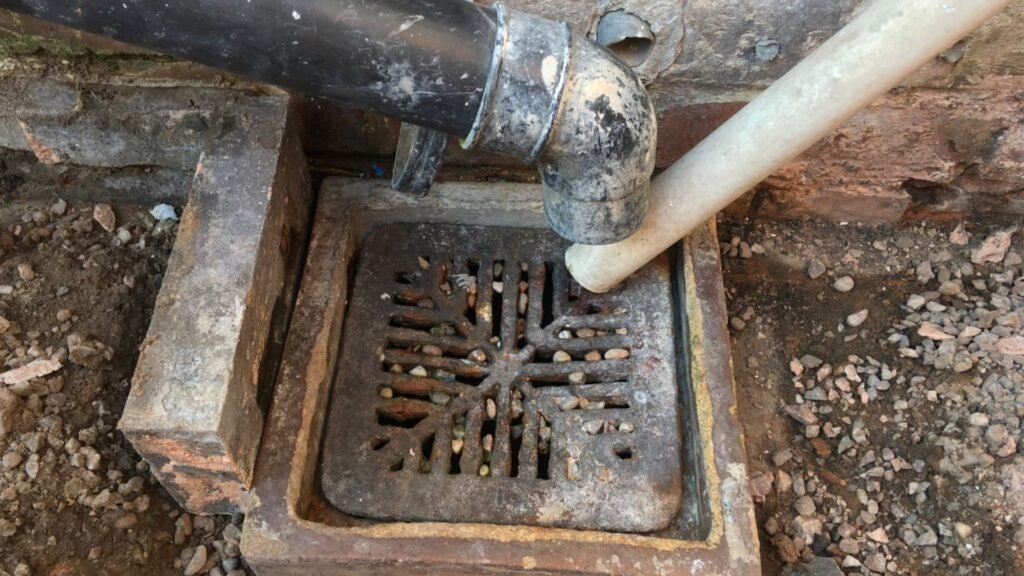
Common Problems With Gully Traps
Gully traps are essential components in the drainage systems of homes and buildings, playing a crucial role in preventing foul odors from seeping back into the property. However, like any other plumbing fixture, they can encounter problems. Understanding these common issues can help you maintain your gully traps and ensure they function effectively.
Blockages
Causes and Signs of Blockages in Gully Traps
One of the most frequent problems with gully traps is blockages. These can occur due to various reasons, including the accumulation of debris, leaves, dirt, and grease. Over time, these materials can build up and obstruct the flow of water, leading to blockages.
Signs of a blocked gully trap include slow drainage, unpleasant odors, and water pooling around the trap. You might also notice that water is backing up into sinks, showers, or other fixtures connected to the same drainage system. Regularly checking and cleaning your gully traps can help prevent these issues from becoming severe.
Damage and Wear
How Gully Traps Can Get Damaged Over Time
Gully traps, like any other plumbing fixture, are subject to wear and tear. Continuous exposure to water, chemicals, and environmental elements can cause them to deteriorate. Cracks, corrosion, and physical damage can compromise the integrity of the gully trap, leading to leaks and inefficiency.
Damage to gully traps can be caused by various factors such as heavy objects falling on them, freezing and thawing cycles in colder climates, or the corrosive nature of certain household chemicals. Regular inspection and maintenance are crucial to identifying signs of damage early. If you notice any cracks, rust, or other forms of deterioration, it’s essential to repair or replace the gully trap promptly to avoid more significant problems down the line.
Poor Installation
Issues Arising from Improper Installation
Another common issue with gully traps is poor installation. If gully traps are not installed correctly, they can cause a range of problems. Improper alignment, incorrect sealing, and inadequate support can lead to leaks, blockages, and inefficient drainage.
Poor installation can also result in the trap not being set at the correct height or angle, which can affect its ability to function properly. For instance, if a gully trap is installed too low, it may not effectively prevent backflow of sewage gases, leading to foul odors permeating the area.
To ensure your gully traps are installed correctly, it’s advisable to hire a professional plumber who has experience and knowledge in installing these fixtures. Proper installation not only prevents immediate problems but also extends the lifespan of your gully traps.
By understanding and addressing these common problems, you can ensure that your gully traps remain efficient and effective in maintaining a healthy and odor-free drainage system.
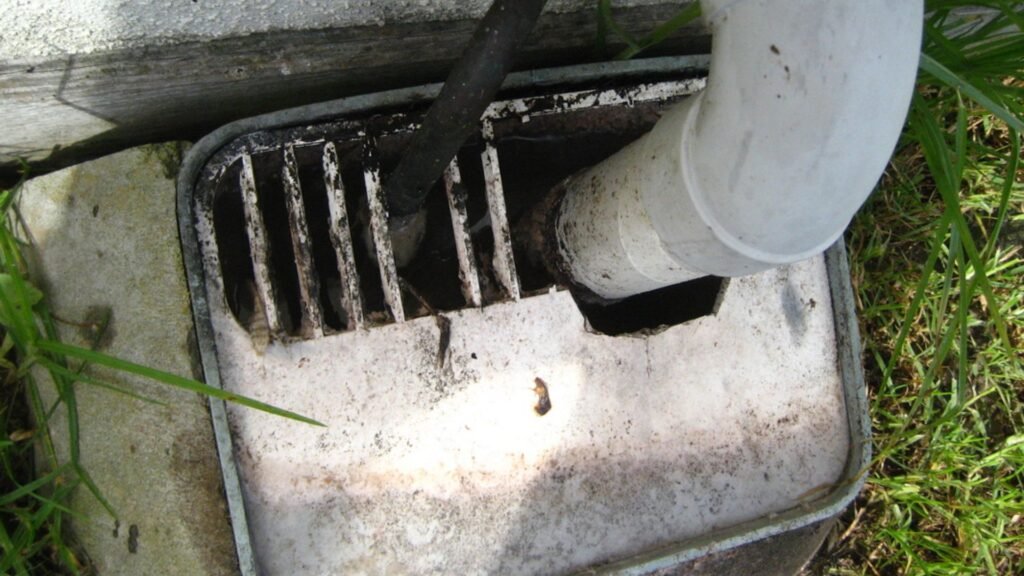
How To Maintain Your Gully Trap
Maintaining your gully trap is crucial for ensuring it functions efficiently and prevents blockages and unpleasant odors. Here are some practical steps and tips to keep your gully trap in top condition.
Regular Cleaning
Regular cleaning is the first step in maintaining your gully trap. Here’s a simple guide to help you.
1. Gather Supplies: You’ll need gloves, a bucket, a stiff brush, and a hose.
2. Remove Debris: Start by removing any visible debris such as leaves, twigs, and dirt from the surface of the gully trap.
3. Flush with Water: Use a hose to flush the trap with water, ensuring that all small particles are washed away.
4. Scrub the Trap: Use a stiff brush to scrub the interior of the trap, removing any buildup of grime or organic material.
5. Final Rinse: Give the trap a final rinse with the hose to wash away any remaining residue.
Regular cleaning, ideally once a month, helps prevent blockages and keeps your gully trap functioning efficiently.
Inspection Tips
Regular inspections can help you catch potential problems early. Here are some tips for inspecting your gully trap.
1. Visual Check: Look for any visible signs of damage, such as cracks or corrosion, on the trap itself and the surrounding area.
2. Water Flow: Observe the water flow through the trap. Slow drainage or standing water could indicate a blockage.
3. Odor Check: Unpleasant smells coming from the trap can be a sign of a clog or buildup inside.
4. Pest Check: Check for any signs of pests, like insects or rodents, which could indicate a breach in the trap or surrounding pipes.
Perform these inspections every few months to ensure your gully trap is in good condition.
Professional Maintenance
While regular cleaning and inspections can handle minor maintenance, there are times when professional help is necessary.
1. Persistent Blockages: If you’re experiencing frequent blockages despite regular cleaning, it may be time to call a professional.
2. Structural Damage: Visible cracks or structural damage to the gully trap require expert repair to prevent leaks and further issues.
3. Severe Odors: Persistent foul odors, even after cleaning, could indicate a deeper issue that needs professional assessment.
4. Regular Servicing: It’s a good idea to have a professional inspect and service your gully trap annually. They can perform a thorough cleaning and check for any hidden problems.
Knowing when to seek professional help ensures that your gully trap remains in optimal working condition, preventing costly repairs down the line.
By following these tips for regular cleaning, inspection, and knowing when to call in the professionals, you can maintain your gully trap effectively and keep your drainage system running smoothly.

Gully Trap Installation Guide
DIY vs. Professional Installation
DIY Installation
Pros
1. Cost Savings: One of the primary benefits of DIY installation is the potential for cost savings. By taking on the project yourself, you can avoid labor costs associated with hiring a professional.
2. Learning Experience: Installing a gully trap on your own can be a valuable learning experience, giving you a deeper understanding of your home’s plumbing system.
3. Flexibility: DIY projects allow you to work at your own pace and on your own schedule, without the need to coordinate with a contractor.
Cons
1. Skill and Knowledge Requirements: Installing a gully trap requires a certain level of plumbing knowledge and skills. Without proper expertise, you risk improper installation, which can lead to future problems.
2. Time-Consuming: DIY installation can be time-consuming, especially for those who are not experienced in plumbing. What might take a professional a few hours could take an amateur several days.
3. Potential for Mistakes: Mistakes in installation can lead to significant issues, such as water leaks, blockages, or non-compliance with local regulations, which can be costly to fix.
Professional Installation
Pros
1. Expertise and Experience: Professionals have the necessary expertise and experience to ensure that the gully trap is installed correctly and efficiently.
2. Compliance with Regulations: Hiring a professional ensures that the installation complies with all local regulations and standards, reducing the risk of fines or future problems.
3. Time Efficiency: Professionals can complete the installation much faster than a DIY project, minimizing disruption to your home and daily routine.
4. Warranty and Guarantees: Many professional services offer warranties or guarantees on their work, providing peace of mind and protection against future issues.
Cons
1. Higher Cost: The primary drawback of professional installation is the cost. Labor fees can be significant, particularly for complex installations.
2. Scheduling Constraints: Hiring a professional may require you to work around their schedule, which can sometimes lead to delays.
Step-by-Step Installation
Installing a gully trap involves several critical steps to ensure it functions properly and complies with local regulations. Here’s a basic overview of the process.
1. Planning and Preparation
Determine the location for the gully trap, ensuring it is at the lowest point where water naturally collects. Gather all necessary tools and materials, including the gully trap, PVC pipes, couplings, a hacksaw, and PVC cement.
2. Excavation
Excavate the area where the gully trap will be installed, digging down to the appropriate depth as specified by the manufacturer’s guidelines. Ensure the excavation is wide enough to accommodate the trap and associated piping.
3. Pipe Installation
Lay the PVC pipes, ensuring a slight gradient to facilitate water flow towards the gully trap. Cut the pipes to the required length using a hacksaw, and smooth any rough edges.
4. Connecting the Gully Trap
Attach the gully trap to the PVC pipes using couplings and PVC cement, ensuring a secure and watertight connection. Position the gully trap so that it sits level with the surrounding ground.
5. Backfilling and Compaction
Once the gully trap and pipes are securely in place, backfill the excavation with soil, compacting it firmly to prevent any future settling.
6. Testing
Test the installation by running water through the system to ensure there are no leaks and that the water flows correctly into the gully trap.
Local Regulations
In New Zealand, the installation of gully traps is governed by specific regulations to ensure the safety and effectiveness of the drainage system. Key regulations include.
1. Building Code Compliance
All gully traps must comply with the New Zealand Building Code, which sets out the performance standards for plumbing and drainage systems.
2. Council Permits
Depending on your local council, you may need to obtain a permit before installing a gully trap. It is essential to check with your local council for specific requirements and obtain any necessary permits before beginning the installation.
3. Inspection Requirements
Some installations may require inspection by a council-approved inspector to ensure compliance with regulations. This is particularly important for new builds or significant renovations.
4. Environmental Considerations
The location and design of the gully trap must consider environmental factors to prevent contamination of local waterways. Proper installation helps manage stormwater and wastewater effectively, protecting the environment.
By understanding and adhering to these local regulations, you can ensure that your gully trap installation is compliant and effective, helping to maintain the safety and functionality of your home’s drainage system.
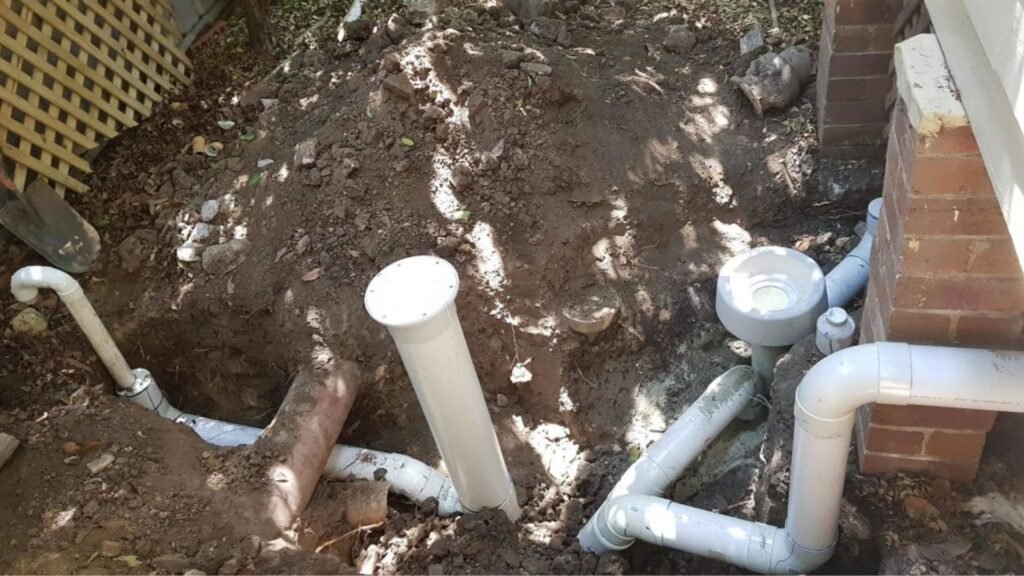
Choosing The Right Gully Trap For Your Home
When it comes to maintaining a safe and functional drainage system, selecting the right gully trap is crucial. A gully trap prevents sewer gases from entering your home, ensures effective drainage, and reduces the risk of blockages. Here are some key considerations to help you choose the perfect gully trap for your home in New Zealand.
Material Considerations
The material of your gully trap significantly impacts its durability, performance, and cost. Here’s a breakdown of the most common materials used.
Plastic Gully Traps
- Pros: Lightweight, easy to install, corrosion-resistant, and cost-effective.
- Cons: Less durable than metal options, can be prone to damage under heavy loads or extreme temperatures.
Cast Iron Gully Traps
- Pros: Extremely durable, capable of withstanding heavy loads, and long-lasting.
- Cons: More expensive, heavier, and can be prone to rust if not properly maintained.
Concrete Gully Traps
- Pros: Highly durable, suitable for high-traffic areas, and resistant to chemicals.
- Cons: Heavy, challenging to install, and may crack over time.
Stainless Steel Gully Traps
- Pros: Durable, rust-resistant, and aesthetically pleasing.
- Cons: Higher cost, and may not be necessary for all applications.
Consider the specific needs of your home and the environmental conditions when selecting the material. For most residential applications, plastic gully traps are a popular choice due to their affordability and ease of installation.
Size and Capacity
Choosing the right size and capacity for your gully trap is essential to ensure it can handle the drainage needs of your home. Here’s how to determine the appropriate size.
- Assess Your Drainage Needs: Consider the volume of water and waste that will flow through the gully trap. Homes with multiple bathrooms, kitchens, and large outdoor areas may require larger capacity traps.
- Check Local Regulations: In New Zealand, there are specific standards and regulations regarding gully trap sizes. Ensure your selection complies with these guidelines to avoid any legal issues.
- Consult a Professional: If you’re unsure about the right size, it’s always a good idea to consult with a drainage specialist or plumber. They can assess your home’s specific needs and recommend the best option.
A properly sized gully trap will efficiently handle waste and water flow, preventing backups and ensuring smooth operation of your drainage system.
Brand Recommendations
When it comes to reliability and performance, choosing a reputable brand for your gully trap can make a significant difference. Here are some popular and reliable brands available in New Zealand.
1. Marley
Known for their high-quality plastic drainage solutions, Marley offers a range of gully traps that are easy to install and highly durable.
2. RX Plastics
RX Plastics provides a variety of drainage products, including gully traps designed for both residential and commercial applications. Their products are known for their robustness and reliability.
3. Humes Pipeline Systems
Specializing in concrete and plastic drainage solutions, Humes offers gully traps that are built to last. Their products meet New Zealand’s stringent quality standards.
4. Iplex Pipelines
Iplex is another trusted brand in New Zealand, offering a wide range of drainage solutions. Their gully traps are designed for optimal performance and longevity.
Choosing a gully trap from a reputable brand ensures you get a product that has been tested for quality and durability. It’s an investment in the long-term functionality of your home’s drainage system.
Selecting the right gully trap for your home involves careful consideration of material, size, capacity, and brand. By understanding the pros and cons of different materials, accurately determining your needs, and choosing a reliable brand, you can ensure a smooth-running and effective drainage system for your home. Investing time and effort in selecting the right gully trap will pay off in the long run, keeping your home safe from sewer gases and drainage issues.

Cost Of Gully Traps In NZ
Price Range
When it comes to gully traps in New Zealand, the cost can vary depending on several factors. Typically, you can expect to pay anywhere from $50 to $200 for a standard gully trap. This price range can fluctuate based on the quality, material, and brand of the gully trap. Higher-end models with advanced features or made from premium materials will naturally be at the upper end of this range.
Factors Affecting Cost
Several factors can influence the cost of gully traps.
1. Material: Gully traps are made from various materials, including plastic, cast iron, and stainless steel. Plastic gully traps are generally the most affordable, while cast iron and stainless steel options can be more expensive due to their durability and longevity.
2. Brand: Like most products, the brand of the gully trap can significantly impact the price. Well-known and reputable brands may charge more for their products due to their reliability and warranty offerings.
3. Size and Type: The size and specific type of gully trap you need will also affect the cost. Larger or specialized gully traps designed for unique situations may come at a higher price.
4. Installation Costs: Don’t forget to factor in the cost of installation. Professional installation can range from $100 to $300, depending on the complexity of the job and the rates of the plumber you hire.
5. Location: Prices can also vary depending on your location within New Zealand. Urban areas might have higher installation costs compared to rural locations due to the higher cost of living and doing business.
Budgeting Tips
Budgeting for a new gully trap and its installation can be straightforward if you keep a few key tips in mind.
1. Research and Compare: Start by researching different brands and materials to understand your options. Comparing prices from various suppliers can help you find the best deal.
2. Get Multiple Quotes: When it comes to installation, don’t settle for the first quote you receive. Obtain multiple quotes from different plumbers to ensure you’re getting a fair price.
3. Consider Long-Term Value: While it might be tempting to opt for the cheapest option, consider the long-term value. Investing in a more durable material or a reputable brand can save you money on replacements and repairs in the future.
4. Plan for Additional Costs: Make sure to budget for any additional costs that might arise during the installation process, such as potential repairs to existing plumbing or unforeseen complications.
5. DIY Where Possible: If you have some plumbing knowledge and experience, you might be able to install the gully trap yourself, saving on labor costs. However, ensure you’re confident in your abilities to avoid costly mistakes.
By understanding the price range, factors affecting costs, and budgeting tips, you can make a well-informed decision about purchasing and installing a gully trap in New Zealand. Proper planning and research can help you find the best gully trap to meet your needs without breaking the bank.
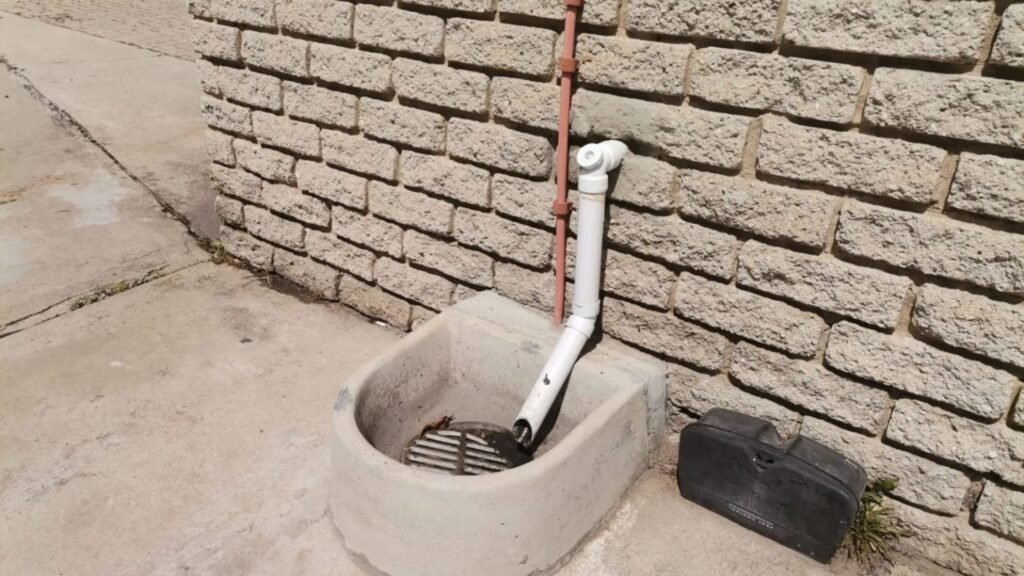
Real-Life Case Studies
Homeowner Experiences
Gully traps are a crucial component of any drainage system, and real-life experiences from homeowners in New Zealand highlight their importance and functionality. Let’s explore two such stories that illustrate how gully traps have made a significant difference in managing water drainage and preventing potential issues.
Case Study 1: Jane’s Flood-Free Basement
Jane, a homeowner in Auckland, faced constant issues with water pooling around her basement during heavy rains. Despite having a robust drainage system, the water found its way into her basement, causing damage to her stored belongings. After consulting with a drainage specialist, Jane decided to install a gully trap.
The installation of the gully trap was straightforward and quick. Within a few days, Jane noticed a significant improvement. The gully trap efficiently redirected the water away from her basement, preventing any further flooding. Jane’s testimonial reflects her satisfaction: “Installing the gully trap was the best decision I made for my home. It’s been two years, and my basement has stayed dry through the heaviest rains.“
Case Study 2: Mark’s Garden Rescue
Mark, from Wellington, had a beautifully landscaped garden that would often suffer from waterlogging after every rainstorm. The excess water not only ruined his plants but also made the garden unusable for days. Frustrated with the recurring problem, Mark sought advice from a local landscaping expert who recommended installing a gully trap.
The gully trap was installed at the lowest point of Mark’s garden, ensuring that any excess water would be quickly drained away. The result was immediate and impressive. Mark’s garden no longer faced waterlogging issues, and his plants thrived better than ever. Mark shared his experience, saying, “I was amazed at how such a simple solution could make such a big difference. My garden is now always ready to be enjoyed, rain or shine.“
Lessons Learned
The experiences of Jane and Mark offer valuable lessons for homeowners facing similar issues with water drainage. Here are the key takeaways from these real-life examples.
1. Proactive Measures Pay Off: Installing a gully trap can prevent long-term damage and save costs associated with water damage repairs. Both Jane and Mark found that addressing the problem early on with the right solution brought lasting benefits.
2. Customized Solutions Are Effective: Each property is unique, and a one-size-fits-all approach may not work. Jane’s basement and Mark’s garden had different issues, but both benefited from a tailored installation of gully traps suited to their specific drainage needs.
3. Professional Advice Is Crucial: Consulting with experts who understand the local climate and soil conditions can lead to effective solutions. Jane and Mark both sought professional help, which led to the successful implementation of gully traps that resolved their water drainage problems.
4. Maintenance Matters: Regular maintenance of gully traps ensures they continue to function effectively. Homeowners should periodically check their gully traps for debris or blockages to maintain optimal performance.
5. Enhanced Property Value: Effective water management solutions like gully traps not only protect homes and gardens but also enhance the overall value of the property. A well-maintained drainage system is a desirable feature for potential buyers.
Real-life case studies like those of Jane and Mark underscore the importance of gully traps in maintaining effective water drainage. Their experiences highlight the benefits of proactive measures, customized solutions, professional advice, regular maintenance, and the added value to their properties. By learning from these examples, homeowners can make informed decisions to protect their homes and enjoy their spaces without the worry of water-related issues.
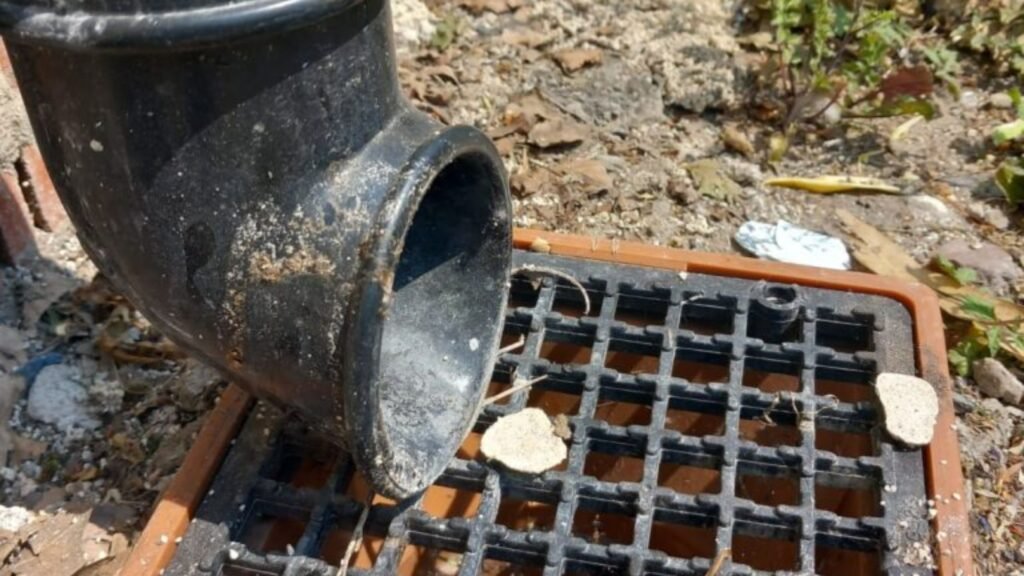
FAQs: About Gully Traps NZ
What is a gully trap?
A gully trap is a plumbing device that prevents sewer gases from entering buildings while allowing wastewater to flow into the sewer system. It works by maintaining a water seal that blocks odors and gases.
Why are gully traps important?
Gully traps are essential for maintaining a hygienic and odor-free environment. They prevent harmful sewer gases from entering homes and help in the efficient flow of wastewater into the sewer system.
What are the different types of gully traps in NZ?
In New Zealand, there are traditional gully traps made of materials like cast iron and modern ones made from durable plastics. Modern gully traps often feature improved designs for better efficiency and ease of maintenance.
How do I maintain my gully trap?
Regular maintenance involves cleaning the gully trap to remove debris, inspecting for any damage or blockages, and ensuring the water seal is intact. Professional maintenance is recommended for more thorough inspections and repairs.
What common problems can occur with gully traps?
Common issues include blockages from debris, damage from wear and tear, and improper installation. These problems can lead to ineffective sealing and odor leakage.
Can I install a gully trap myself?
While some homeowners may choose to install a gully trap themselves, it is generally recommended to hire a professional plumber to ensure proper installation and compliance with local regulations.
How much do gully traps cost in NZ?
The cost of gully traps in New Zealand varies based on the material, brand, and complexity of the installation. Prices can range from $50 to several hundred dollars.
What materials are gully traps made from?
Gully traps can be made from various materials including plastic, cast iron, and PVC. Each material has its pros and cons regarding durability, cost, and ease of maintenance.
How often should I inspect my gully trap?
It is advisable to inspect your gully trap at least once a year, or more frequently if you notice any issues such as unpleasant odors or slow drainage.
Are there any regulations for installing gully traps in NZ?
Yes, New Zealand has specific building codes and regulations for the installation of gully traps to ensure they function correctly and safely. It is important to follow these guidelines or hire a professional who is familiar with them.
Conclusion
In conclusion, understanding the importance and functionality of gully traps in New Zealand is essential for maintaining an efficient drainage system. Throughout this article, we have explored the various types of gully traps, their installation processes, and the common issues homeowners might face. To ensure your gully trap operates optimally, remember to regularly check for blockages, clean the trap as needed, and choose a type that suits your specific drainage requirements. For those looking to upgrade or maintain their current system, it’s crucial to consider factors such as the material and size of the trap. Regular inspections can prevent costly repairs down the line, so take the time to evaluate your gully traps and make improvements where necessary. Finally, don’t hesitate to seek professional advice if you encounter persistent issues or need guidance on selecting the right trap for your property. By staying proactive, you can safeguard your home against potential drainage problems and ensure a smooth-flowing system.
About the Author:
Mike Veail is a recognized digital marketing expert with over 6 years of experience in helping tradespeople and small businesses thrive online. A former quantity surveyor, Mike combines deep industry knowledge with hands-on expertise in SEO and Google Ads. His marketing strategies are tailored to the specific needs of the trades sector, helping businesses increase visibility and generate more leads through proven, ethical methods.
Mike has successfully partnered with numerous companies, establishing a track record of delivering measurable results. His work has been featured across various platforms that showcase his expertise in lead generation and online marketing for the trades sector.
Learn more about Mike's experience and services at https://theleadguy.online or follow him on social media:
